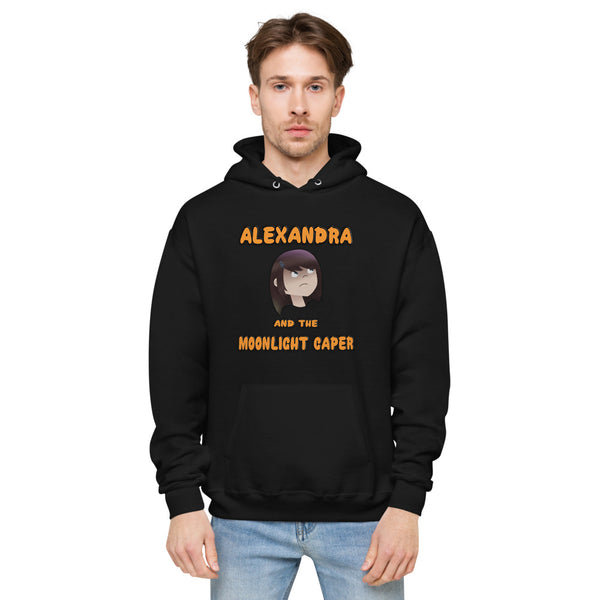Miniwashitu to Taku-He: The Cryptids of North Dakota

By Lucas Jennings, Cryptozoologist
Deep in the heart of North Dakota, where rolling prairies give way to rugged badlands and windswept lakes, there lurk creatures that seem to defy explanation. For generations, the region's inhabitants have whispered tales of shaggy humanoids, serpentine river monsters, and shadowy entities that stalk the vulnerable. Welcome to the eerie world of North Dakota's cryptids.
As an adventurous naturalist with a passion for the unknown, I've always been drawn to the stories that exist on the fringes of science. The legends of mysterious beasts that have managed to elude classification and capture the imaginations of people across cultures and generations. And when it comes to cryptid lore, few places are as surprisingly rich as North Dakota.
From the terrifying Miniwashitu, a shaggy red-haired river monster straight out of Native American legend, to Taku-He, a Bigfoot-like being spotted on Indian reservations, to the serpentine beast said to lurk in the depths of Devils Lake, this unassuming state is a veritable hotbed of cryptozoological intrigue. Join me as we delve into the fascinating world of North Dakota's legendary creatures and explore what these enduring tales might reveal about the land and its people.
The Miniwashitu: Terror of the Missouri River
Perhaps the most infamous of North Dakota's cryptids is the dreaded Miniwashitu, also known as the Missouri River Monster. This terrifying aquatic beast has its origins in the myths of the Dakota people, who spoke of a rarely-seen creature covered in shaggy red hair, with a single eye, a horn protruding from its forehead, humanoid hands, elk-like hooves, and a jagged, saw-toothed spine running down its back.
The earliest known account of the Miniwashitu in modern times comes from ethnologist Melvin Randolph Gilmore, who recorded Dakota stories of the creature in the early 20th century. According to Gilmore's informants, simply glimpsing this monster in broad daylight was enough to drive a person mad and ultimately cause their death. One man who laid eyes upon the beast and survived just long enough to describe its awful appearance soon lost his sanity and perished.
The idea of a creature so horrifying that the mere sight of it can shatter the human mind is a chilling one, and it's a theme that runs through many cryptid legends around the world. But what sets the Miniwashitu apart is its dual nature. While it was undoubtedly feared for its lethal effect on those unfortunate enough to see it, the monster was also believed to play a vital role in the ecology of the Missouri River.
Native legends held that the Miniwashitu's springtime thrashing and writhing as it swam upstream helped to break up the thick ice that accumulated on the river over the harsh North Dakota winter. In a sense, the creature's fearsome power was necessary for the renewal and rebirth that came with the thaw. It's a fascinating example of how cryptid lore often reflects a deep understanding of and respect for the natural world, even as it attributes supernatural qualities to the creatures that inhabit it.
Of course, as with any cryptid legend, there are those who seek to explain the Miniwashitu in more mundane terms. Some researchers have proposed that the story may have originated from distorted sightings of real aquatic animals like the paddlefish or sturgeon, which can grow to enormous sizes in the Missouri's depths. It's not hard to imagine how a glimpse of one of these ancient, alien-looking fish breaching the surface could be transformed into something far more monstrous in the telling and retelling of the tale.
However, the supernatural abilities and uncanny features ascribed to the Miniwashitu suggest that there's more at play here than a simple case of misidentification. The creature's single eye, its horn, its saw-like spine - these are details that speak to a deeper symbolic and mythological significance. In many ways, the Miniwashitu is more at home in the realm of folklore than biology, a manifestation of the awe and terror that the natural world can inspire in the human imagination.
Taku-He: Bigfoot Sightings on the Fort Berthold Reservation
Moving from the rivers to the forests, we have the curious case of Taku-He, a Bigfoot-like being that was the subject of numerous sightings on the Fort Berthold Indian Reservation in the 1970s. The creature's name, which means "big man" in the Lakota language, gives a clue as to its appearance. Witnesses described Taku-He as standing between 7 and 9 feet tall and covered in shaggy fur, not unlike the classic conception of Sasquatch.
The first modern reports of Taku-He emerged in 1977, when a film crew scouting locations for a movie on the reservation discovered large, humanoid footprints in the area. As word spread, more sightings began to pour in from local residents. One of the most dramatic accounts came from a man named LeMar Bear Ribs, who claimed to have encountered Taku-He in the flesh. Bear Ribs described the creature as a "big hairy man" whose very presence was enough to induce a seizure.
But Taku-He was more than just a hulking, hirsute humanoid. Some stories imbued the creature with supernatural powers, claiming it could cause insanity or even death with a mere glance - an unsettling parallel to the Miniwashitu legend. As the sightings continued throughout September of 1977, reports of mutilated livestock and even UFO activity in the area added to the growing hysteria.
It's worth noting that the Taku-He flap occurred during a time when Bigfoot mania was sweeping the nation. The infamous Patterson-Gimlin film, which purported to show a female Sasquatch striding through the forests of northern California, had been released just a decade earlier, and the idea of undiscovered hominids lurking in the wilderness had captured the public imagination. In that context, it's perhaps not surprising that a remote reservation in North Dakota would become the epicenter of its own Bigfoot legend.
But there are also elements of the Taku-He story that set it apart from the typical Sasquatch sighting. The creature's alleged supernatural abilities, for one, hint at a more complex and culturally specific set of beliefs. In some ways, Taku-He bears a closer resemblance to the Wendigo of Algonquian lore - a malevolent, cannibalistic spirit that could possess humans and transform them into monsters - than to the generally reclusive and non-threatening Bigfoot.
The reports of livestock mutilations and UFO activity associated with Taku-He are also intriguing, if difficult to substantiate. Cattle mutilations have long been a staple of paranormal lore, often attributed to extraterrestrial experimentation or government conspiracies. The idea that a Bigfoot-like creature might be connected to these grisly incidents adds a new dimension to the mystery.
As with many cryptid flaps, the Taku-He sightings eventually faded away, leaving behind more questions than answers. Was there a genuine unknown hominid stalking the forests of the Fort Berthold Reservation in the 1970s? Could the creature have been a spiritual or supernatural entity, something akin to the Wendigo or the Skinwalkers of Navajo tradition? Or was it all a case of misidentification, hoaxes, and mass hysteria?
The truth, as is so often the case in the world of cryptozoology, remains elusive. But the legend of Taku-He endures as a fascinating chapter in North Dakota's rich history of strange and inexplicable encounters.
The Devils Lake Monster: A Serpentine Water Cryptid
From the land to the lakes, North Dakota's waterways seem to be a hotspot for cryptid activity. Take, for instance, the legend of the Devils Lake Monster, a serpentine creature said to inhabit the murky depths of the sprawling lake that gives the beast its name. Also known as "Minnie," this aquatic enigma has been a staple of local folklore for untold generations.
Native American legends spoke of a monstrous serpent that lurked beneath the surface of Devils Lake, capsizing canoes and devouring hapless victims. One particularly chilling tale claimed that an entire war party of Sioux warriors met a grisly end in the jaws of the ravenous creature. The monster's appearance was seen as an ill omen, a sign that the spirits were displeased and the lake itself had become tainted.
The Devils Lake Monster first made a splash in the national media in 1904, when a group of female campers claimed to have spotted the beast through a pair of opera glasses. They described it as having a snake-like head, glowing eyes, and a series of humps or spines visible above the water as it undulated through the lake about a mile offshore. The story, which was reported in the Wichita Beacon and picked up by other papers, sparked a flurry of interest in the creature.
Over the following years, sporadic sightings trickled in, each one adding to the legend of Devils Lake's resident monster. Descriptions of the creature varied, with some witnesses claiming it had flippers like a plesiosaur, while others insisted it was more serpentine in form. One account even described it as resembling a colossal horned fish.
As with many lake monster legends, skeptics have proposed a number of mundane explanations for the sightings. Some suggest that witnesses may have misidentified large sturgeon, which are known to inhabit the lake, or that optical illusions caused by floating logs and unusual light conditions on the water could account for the strange appearances.
But for those who believe in the reality of the Devils Lake Monster, these prosaic explanations fall short. They point to the consistency of certain details across multiple sightings - the humps or spines, the serpentine or plesiosaurian shape - as evidence that there is a genuine, unidentified creature lurking in the lake's depths.
There are also those who see a more supernatural dimension to the legend. Some have pointed to Native beliefs in underwater tunnels connecting Devils Lake to nearby Stump Lake, suggesting that the monster may use these subterranean passageways to move between the two bodies of water undetected. It's an intriguing idea, one that hints at a hidden world beneath the surface, where ancient and mysterious beings may dwell.
Whether the Devils Lake Monster is a flesh-and-blood creature or a more ethereal entity, the legend has left an indelible mark on the region's folklore. For generations, the story of the beast has been passed down, whispered around campfires and recounted in hushed tones by those who have braved the lake's waters. It's a reminder that, even in the modern age, there are still corners of the world where the line between the natural and the supernatural seems perilously thin.
Walking Sam: The Soul-Collecting Shadow Spirit
Not all of North Dakota's legendary creatures are confined to the wilderness. In some cases, they seem to have a far more intimate and sinister connection to the human sphere. One particularly unnerving example is the entity known as Walking Sam - a 7-foot-tall specter whose job it is to collect the souls of suicide victims stalks lonely, depressed adolescents.
This Miniwashitu is said to be a towering, shadowy figure that stalks the Standing Rock Indian Reservation, preying upon the depressed and the suicidal. Described as wearing a stovepipe hat and a long coat, Walking Sam is believed to compel vulnerable individuals to take their own lives, ultimately claiming their souls in the process. Some stories even claim that the entity has been glimpsed peering through windows, its very presence filling its victims with an overwhelming sense of despair.
The legend of Walking Sam took on a chilling new dimension in the 1970s, when a disturbing rash of suicides and attempted suicides on the reservation was attributed to the entity's malign influence. Rumors swirled of an "evil spirit" driving teenagers to end their lives, and more recently, a purported Bigfoot corpse discovered on the reservation was linked to the Walking Sam legend by some believers.
As an outsider looking in, it's easy to dismiss Walking Sam as nothing more than a boogeyman, a scary story used to explain the all-too-real tragedy of suicide in Native communities. But to do so would be to ignore the very real power that legends and beliefs can hold over people's lives.
In many indigenous cultures, the spirit world is not some distant, abstract realm, but a living presence that interacts with and influences the material world in tangible ways. The idea of a malevolent entity like Walking Sam, one that can drive people to despair and self-destruction, is not just a spooky campfire tale, but a genuine belief that shapes people's understanding of the world and their place in it.
At the same time, the legend of Walking Sam can also be seen as a way of grappling with the very real social and economic challenges facing many Native communities. The specter of suicide, particularly among young people, is a devastating reality on many reservations, one that is often linked to issues of poverty, addiction, and intergenerational trauma.
In this context, the figure of Walking Sam takes on a new and more complex significance. He becomes not just a supernatural bogeyman, but a symbol of the despair and hopelessness that can take root in communities that have been marginalized and oppressed for generations. By giving a name and a face to this abstract sense of darkness, the legend of Walking Sam may serve as a way for people to confront and make sense of the very real struggles they face.
Of course, the idea of a literal soul-collecting spirit driving people to suicide is not one that sits easily with a modern, scientific worldview. But to dismiss the legend of Walking Sam as mere superstition would be to miss the deeper truths that it speaks to - the very real pain and trauma that exists in many Native communities, and the enduring power of stories and beliefs to shape our understanding of the world.
The Minot Air Force Base "Pot Sasquatch"
Moving from the darkly surreal to the almost comical, we have the strange case of the Minot Air Force Base "Pot Sasquatch." In October 2018, the Air Force published a lighthearted article on its official website warning about the dangers of marijuana, which had recently been legalized in Canada. The article jokingly claimed that a Sasquatch had been found on the base perimeter, lured there by the smell of pot smoke.
While obviously a humorous fabrication, the story of the marijuana-loving Minot Sasquatch briefly captured the public's imagination and generated some viral media attention. The Air Force public affairs office that created the post said it was intended to raise awareness about the potential career risks of drug use in a memorable way. Minot residents still sometimes reference the legendary "Pot Sasquatch" in a nod to the satirical story.
Although not strictly a "cryptid" in the traditional sense, the Pot Sasquatch deserves a mention as an example of how tongue-in-cheek hoaxes and jokes can sometimes take on a life of their own, adding to an area's folklore in unexpected ways. It's a reminder that not all legends are born out of fear or mystery - sometimes, they can emerge from a playful sense of humor and a desire to make a point in a memorable way.
The Pot Sasquatch may not have the same cultural depth or resonance as some of North Dakota's other legendary creatures, but it's still a fascinating example of how modern media and communication can create new folklore on the fly. In an age where viral stories and memes can spread around the globe in a matter of hours, it's easier than ever for new legends to take root and become part of a region's cultural landscape.
From Bigfoot to UFOs: Hangar 1 Publishing Has You Covered!
Explore Untold Stories: Venture into the world of UFOs, cryptids, Bigfoot, and beyond. Every story is a journey into the extraordinary.
Immersive Book Technology: Experience real videos, sights, and sounds within our books. Its not just reading; its an adventure.



























